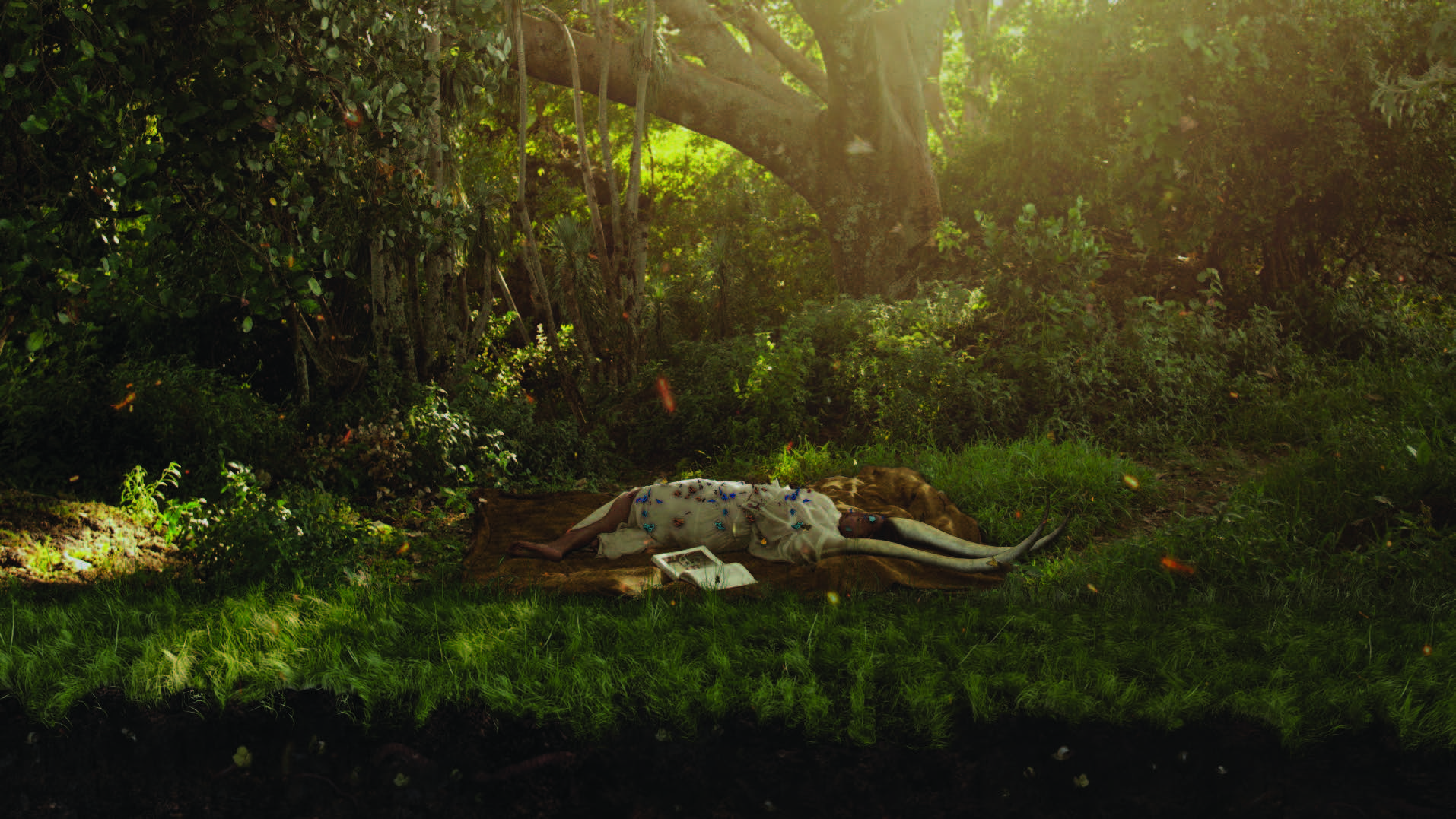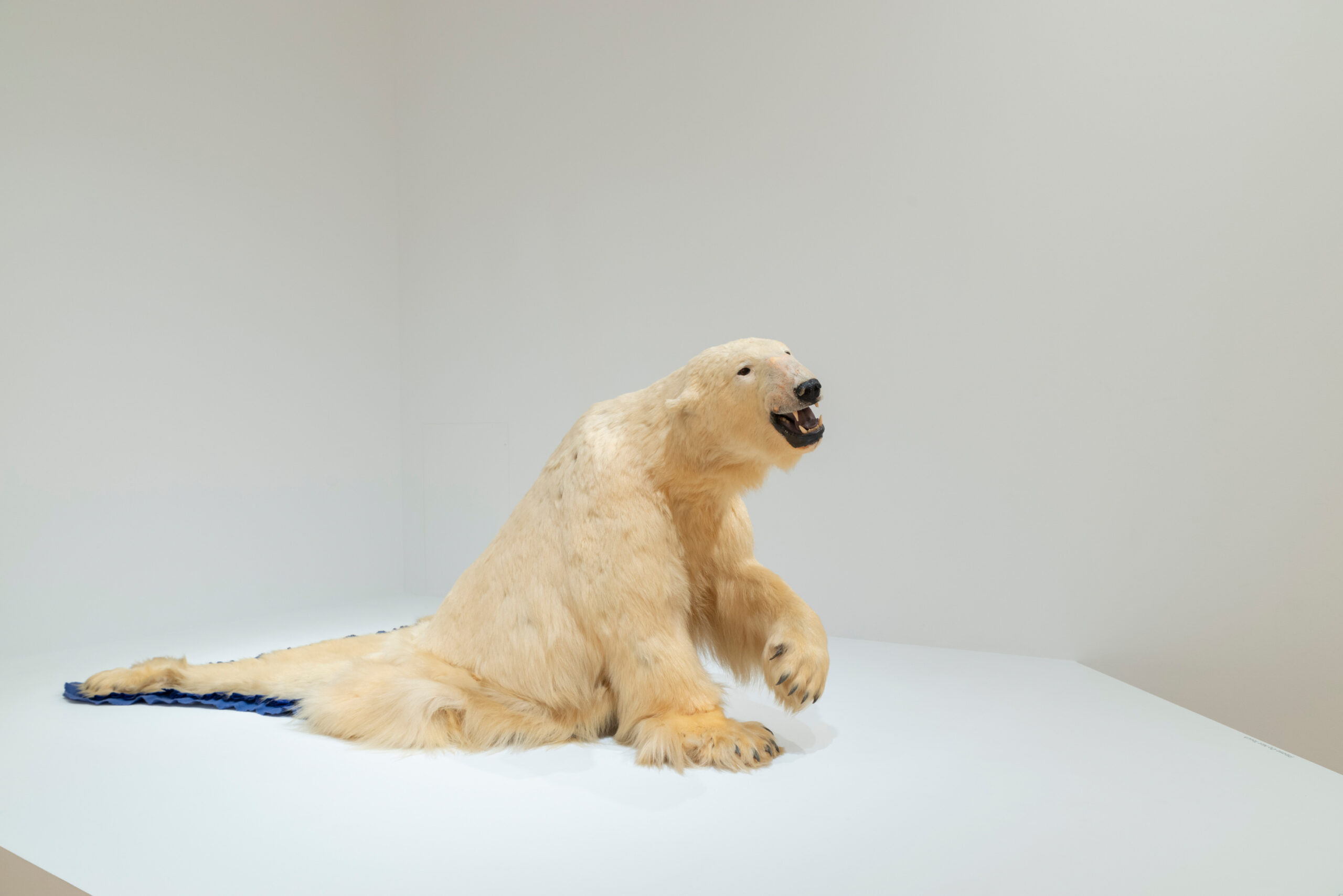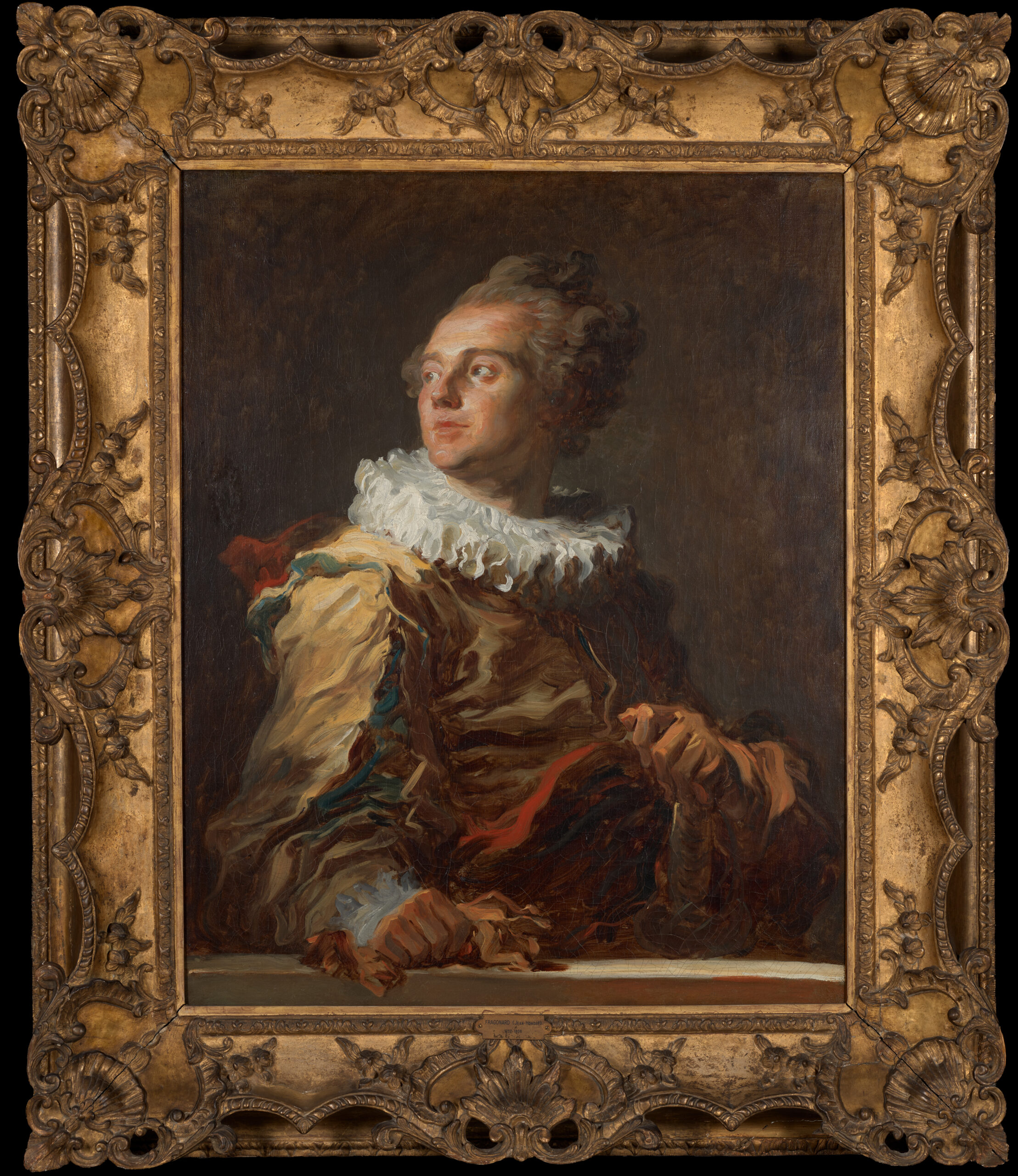
French masterpieces and 17th-century Dutch paintings enliven the European Art Galleries
“Fragonard is bold and rebellious in these paintings,” Dr. Lara Yeager-Crasselt, Curator and Department Head of European Painting and Sculpture explains about the life and work of Jean-Honoré Fragonard (1732–1806), one of the most important and prolific French painters of the late Rococo period (1730s–1760s). Two of his nearly life-sized oil paintings—The Actor and Portrait of a Singer, both executed c. 1769—are currently on loan to the BMA from private collections and can be seen in the European Galleries. The works demonstrate Fragonard’s daring departure from the classical confines of the French Royal Academy and the prevailing traditions of Salon culture, both of which prioritized elevated historical subjects.
After exhibiting for what would be the last time at the Salon of 1767, Fragonard turned to something quite different: portraying members of the French cultural elite, sumptuously dressed in what was known as the Spanish manner, often engaged in artistic or leisurely pursuits. Depicted in an animated and fluid style, these “fantasy figures” set him apart from his contemporaries.
In The Actor, a young man gazes dramatically over his right shoulder into the distance. He wears old-fashioned Spanish attire, including a large white ruff collar, and grasps a sword in his left hand. With the dramatic light animating his face, he seems to be in a moment of repose during a performance. But this is not a portrait of an actor, but rather Fragonard’s friend Gabriel Auguste Godefroy, the son of a wealthy Parisian banker. Likewise, the artist’s Portrait of a Singer depicts the music lover and harpsichord player Anne Pauline Le Breton in a costume à la espagnole (in the Spanish manner)—a satin gown with a square neckline and elbow- length sleeves, pearls, and a brooch—and highlights the singer’s expressive face and engaged posture as she holds out her sheet music.
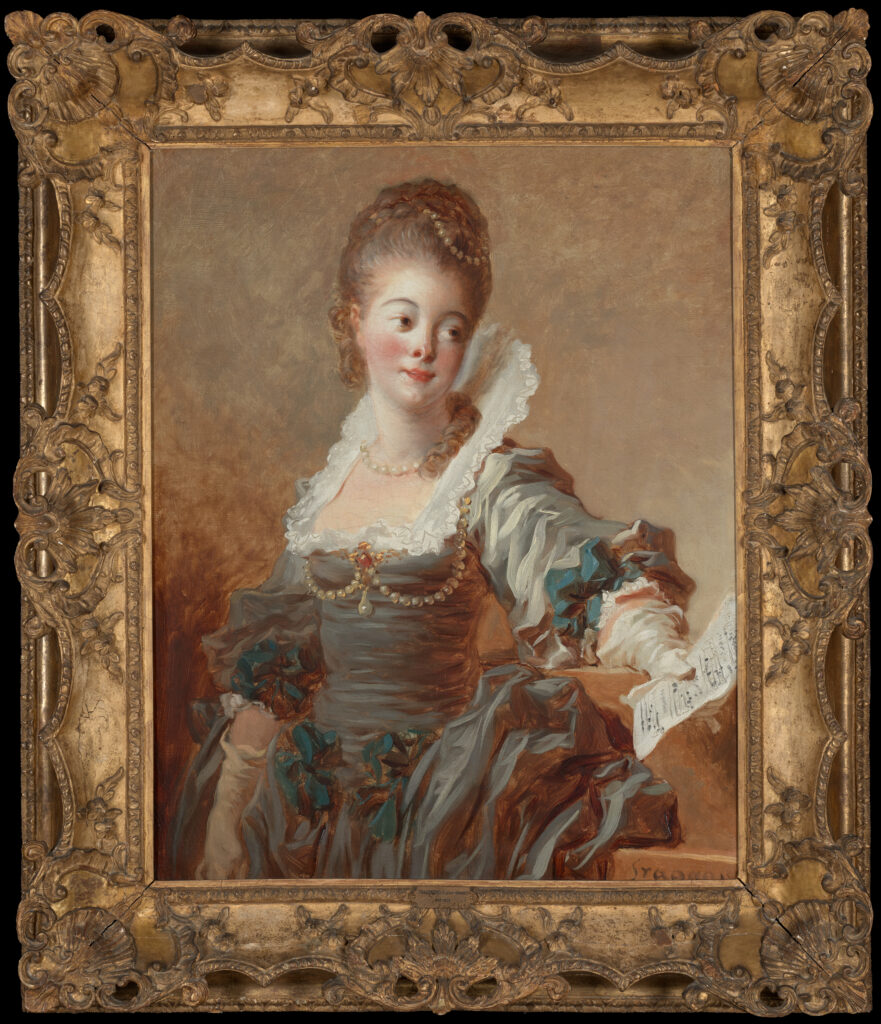
The two paintings belong to Fragonard’s celebrated series of fantasy figures, all rapidly executed in an energetic and virtuosic manner. For many years, the sitters’ identities were unknown, but the discovery in 2012 of a drawing containing a set of 18 thumbnail-sized sketches directly related to the paintings significantly changed scholars’ understanding of the series. Each small sketch is annotated with the names of sitters or patrons from Fragonard’s close circle of friends and associates. This vast social network was explored during a 2017 exhibition at the National Gallery of Art, Fragonard: The Fantasy Figures, in which the newly discovered sketch was shown alongside the 14 known fantasy figure portraits, The Actor and Portrait of a Singer among them.
“This was an unusual group of paintings, daring and irreverent both in its conception and execution,” Yeager-Crasselt continues. “There are blurred boundaries, or a kind of intentional ambiguity in the line between formal portraiture and fantasy. They have a grand presence and immediacy that is supported but also challenged by how quickly and confidently Fragonard executed them.”
The two paintings were paired together in a private collection in the late 19th and early 20th centuries. First acquired by the celebrated Rothschild banking family in the 1880s, and now belonging to their descendants, the paintings were among the many works seized in 1938 following the Anschluss, or annexation of Austria to Nazi Germany, and returned after the end of World War II. The last time they were publicly exhibited together was at the National Gallery of Art in 2017. Now, this pair of fantasy figures faces each other across the doorway in the BMA’s Jacob Epstein gallery, reunited and in conversation with each other once again.
The two Fragonard paintings join several 17th-century Dutch paintings also on long-term loan from private collections in the European Galleries of the Jacobs Wing. Gabriel Metsu’s (1629- 1667) delicately rendered Lady Before a Mirror, 1663–1666, shows a scene of upper-class domesticity and romance with the trappings of Dutch colonial wealth—a Turkish-styled rug and gilded items adorn the lady’s vanity. The painter Jan Baptist Weenix (1621–1659) depicts an Italianate landscape in his idealized scene of a bustling harbor juxtaposed with shepherds and their flock sitting among the ruins of classical Roman architecture.
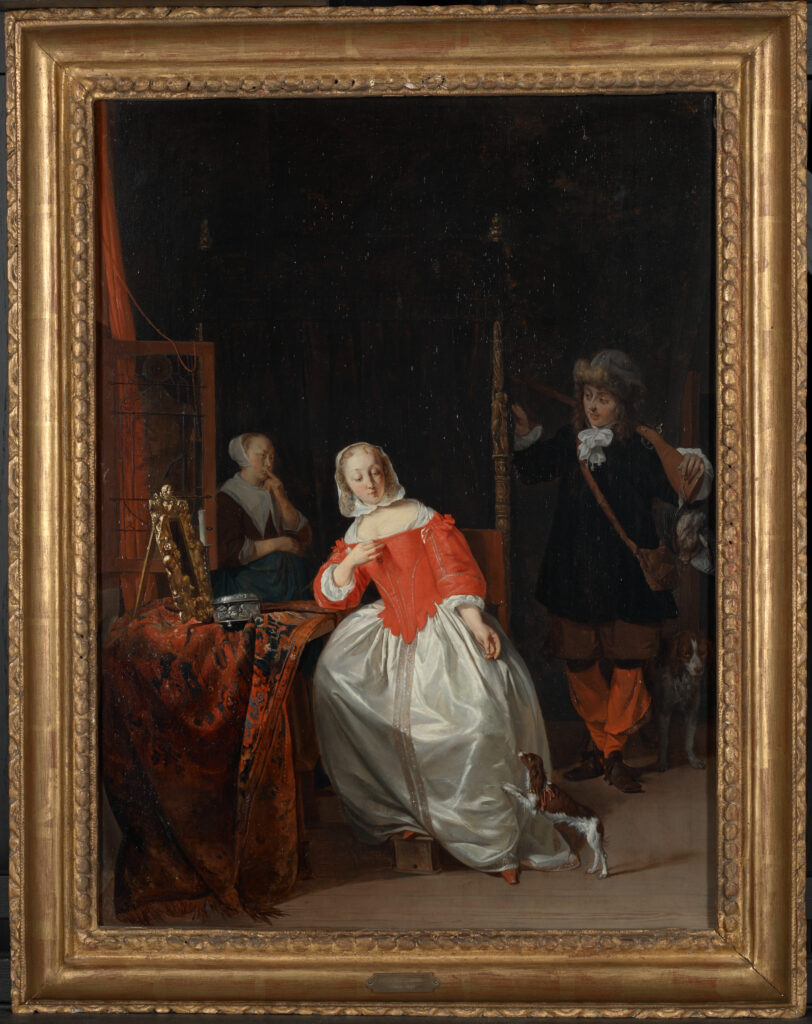
Three additional paintings lent by The Leiden Collection, New York develop some of the themes inherent to the recent exhibition Making Her Mark: A History of Women Artists in Europe, 1400-1800, by considering the role of women as patrons, artists, and participants in the arts and natural sciences. These “cabinet” paintings, small-scale works rendered in a fine manner and intended for close looking, were all created in the city of Leiden in the second half of the 17th century. In contrast to Fragonard’s broad and rapid brushstrokes, these works by artists Frans van Mieris, Willem van Mieris, and Maria Schalcken, are small marvels where viewers can barely see any brushstrokes at all, creating an illusion of realism.
“The Dutch paintings lent to us fill significant gaps in the stories that we’re able to tell in the galleries,” Yeager-Crasselt shares. “Dutch genre paintings are not represented in our permanent collection, and that is such a pivotal part of the artistic tradition that stretches from the 17th century onward, including Fragonard. And not to mention the thrill of having works of such superb artistic quality complement our own collections.”
Most importantly, she stresses that these loans allow visitors to experience the galleries anew and create fresh perspectives. “With the generosity of these loans, we can shed light on new stories and dialogues, enhancing our own collection in exciting ways. Together, these opportunities create new dynamics and opportunities for engagement with European art.



